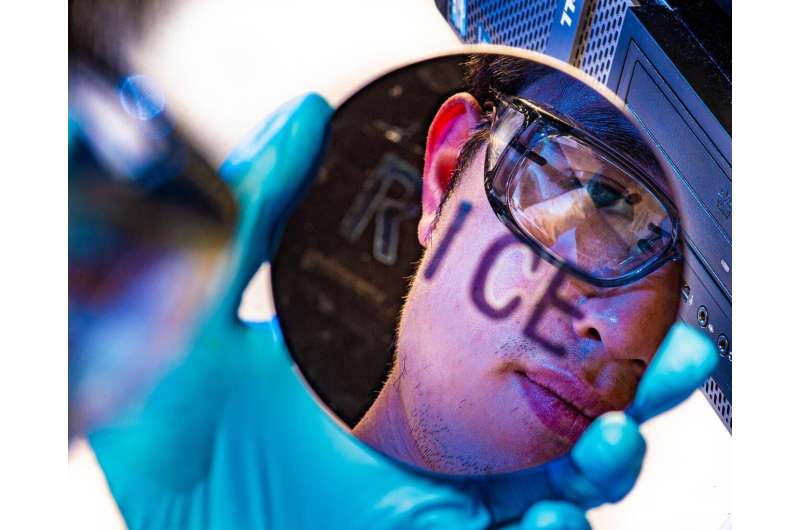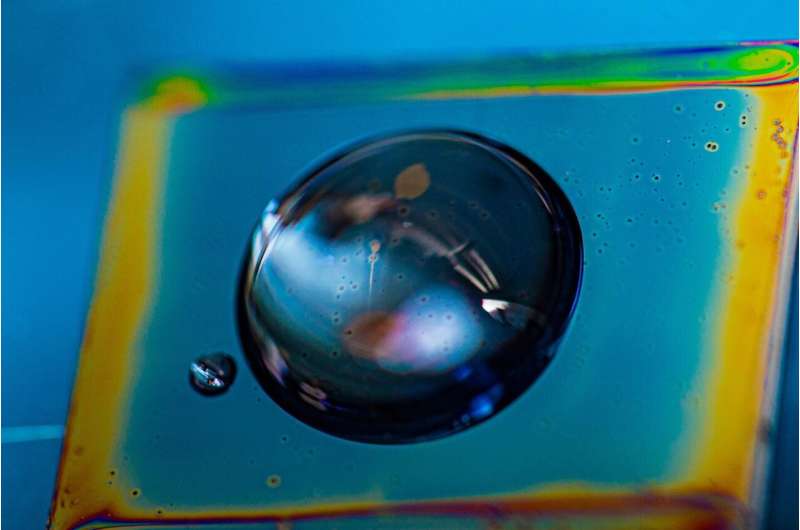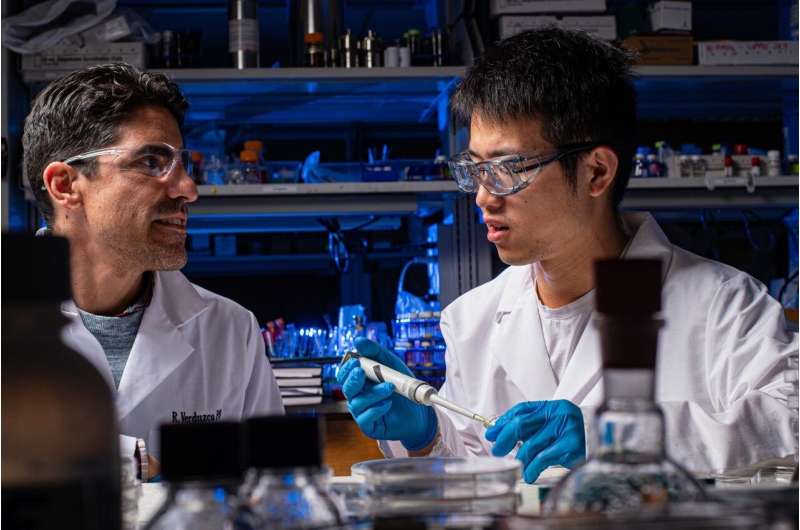Engineers find bottlebrush copolymers can be tailored for applications

A microscopic polymer in the form of a common kitchen implement could give industry exquisite control over coatings.
Bottlebrush copolymers have long been a topic of study for Rafael Verduzco, a chemical and biomolecular engineer at Rice University's Brown School of Engineering. Now, he and his collaborators have developed models and methods to refine surface coatings to make them, for instance, more waterproof or more conductive.
The researchers discovered that bottlebrushes mixed with linear polymers tend to migrate to the top and bottom of a thin film as it dries. These films, as coatings, are ubiquitous in products, for instance as waterproof layers to keep metals from rusting or fabrics from staining.
When the migration happens, the linear polymers hold the center while the bottlebrushes are drawn to the air above or the substrate below. This, Verduzco said, effectively decouples the properties of the bulk coating from its exposed surfaces.
Computational models and experiments showed that variations in the bottlebrush itself could be used to control surface characteristics.
Bottlebrush polymers remain challenging to make in bulk, Verduzco said, but their potential uses are vast. Applications could include drug delivery via functionalized bottlebrushes that form micelles, lubricants, soft elastomers, anti-fouling filters and surfaces that heal themselves, he said.

The details appear in the American Chemical Society journal Macromolecules.
The Rice lab, with help from peers at the University of Tennessee, Knoxville; Oak Ridge National Laboratory and the University of Houston, characterized various bottlebrushes made of polystyrene and poly(methyl methacrylate) (aka PMMA) while studying what causes the polymers to migrate.
Resembling their macro kitchen cousins (as well as certain flowers), bottlebrushes consist of small polymer chains that radiate outward from a linear polymer rod. The bottlebrushes self-assemble in a solution, which can be manipulated to adjust their properties.
Coatings are ubiquitous, Verduzco said. "If we didn't have the right coatings, our materials would degrade quickly," he said. "They would react in ways we don't want them to. So coating a surface is usually a separate process; you make something and then you have to find a way to deposit a coating on top of it.
"What we're looking at is a kind of universal additive, a molecule you can blend with whatever you're making that will spontaneously go to the surface or the interface," he said. "That's how we ended up using bottlebrushes."

Bottlebrushes can be tuned by varying the number of side chains, their length or the length of the backbone polymer, Verduzco said. The side chains themselves can be of mixed type, and small molecules or proteins can be added to their end groups.
"The chemistry of these materials is advanced sufficiently that you can pretty much put just about any kind of polymer as one of these bristles on the side chain," he said. "You can put them in different order."
The researchers found entropic and enthalpic thermodynamics drove bottlebrushes almost completely away from the interior of the films and toward the interfaces as they dried. Even where linear polymers were designed to pair with the surface interface, the bottlebrushes still rose to the exposed surface.
Verduzco noted the findings were made possible by the time of flight-secondary ion mass spectrometer acquired by Rice in 2018 through a National Science Foundation grant. The spectrometer allowed the researchers to characterize not only the surface of coatings by bombarding them with ions, but also how coatings changed as microscopic layers were removed from the top down.
More information: Hao Mei et al, Entropy and Enthalpy Mediated Segregation of Bottlebrush Copolymers to Interfaces, Macromolecules (2019). DOI: 10.1021/acs.macromol.9b01801
Provided by Rice University





















